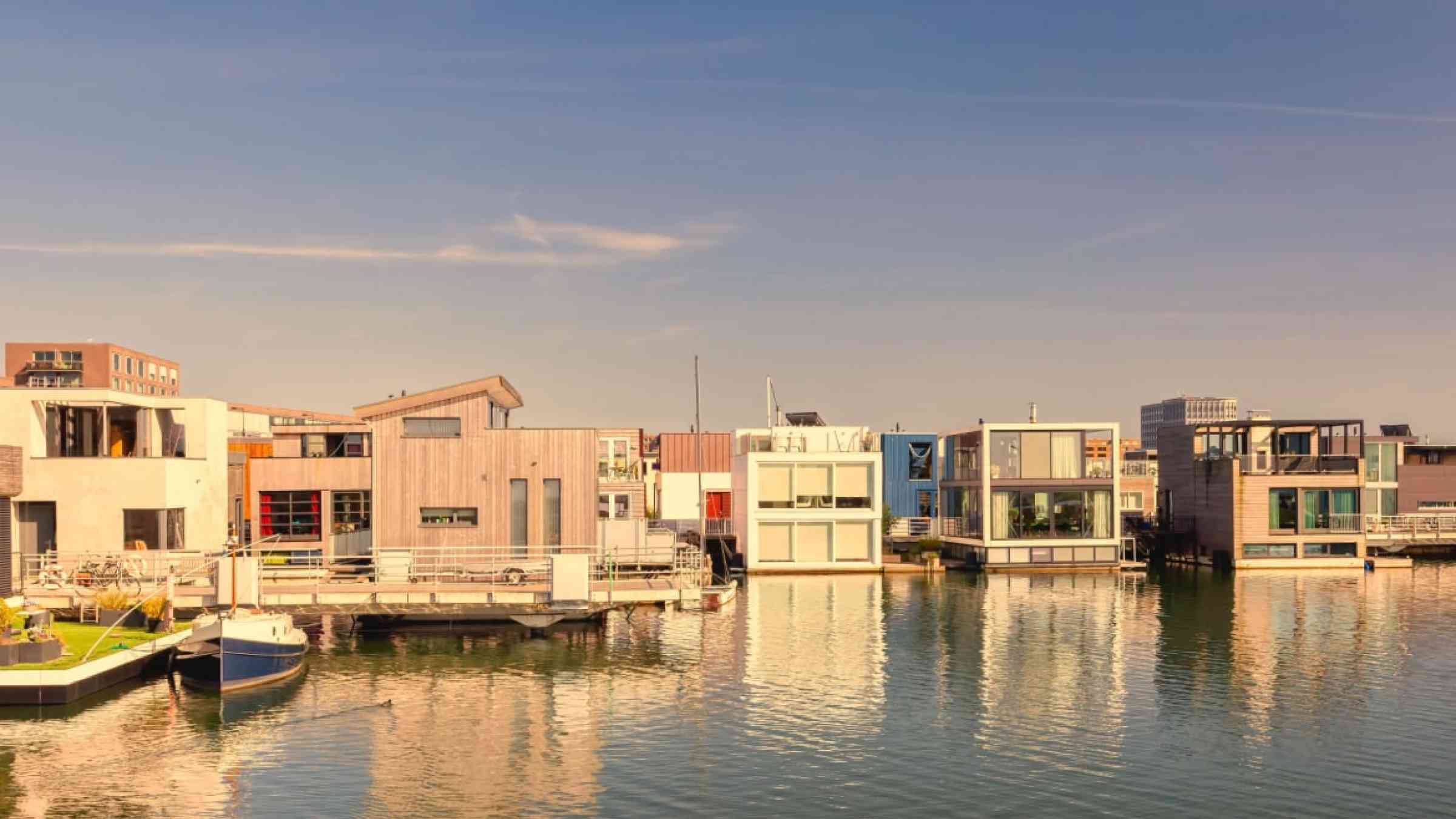Building safe shelter to cope with extreme events

Supporting communities and institutions to reduce risks related to extreme weather events. On occasion of the International Day for Disaster Risk Reduction, the HuT project official kick-off is taking place. The project is aimed at consolidating, integrating and transferring knowledge and good practices in disaster prevention and forecasting. The CMCC Foundation is deputy Coordinator of the Project, which involves twenty-six partners.
October 13 marks the 33rd “International Day for Disaster Risk Reduction (DRR),” an opportunity to raise community awareness and recognize progress made on prevention and disaster risk reduction. This year, the main theme of the International Day for DRR is the seventh global goal of the Sendai Framework (2015-2030) for DRR: “Substantially increase the availability of and access to multi-hazard early warning systems and disaster risk information and assessments to people by 2030.” By 2030, significantly increase the availability and access to multi-hazard early warning, information and disaster risk assessment systems.”
Disaster risk prevention will also be the main theme of the The HuT Project (The Human-Tech Nexus – Building a Safe Haven to cope with Climate Extremes) first meeting, to be held from October 12-14 at the Teatro Tasso in Sorrento. The project, recently funded under the Horizon Europe framework, formally began on October 1, 2022 and will have a 4-year duration. The proposing consortium, coordinated by Prof. Michele Calvello from the Department of Civil Engineering of the University of Salerno, includes twenty-six partners from twelve European countries: Italy, Spain, Austria, Germany, the United Kingdom, Norway, Lithuania, Switzerland, Hungary, Slovakia, Iceland and Finland. The CMCC Foundation – Euro-Mediterranean Centre on Climate Change Climate is deputy Coordinator of the project through the contribution of the REgional Models and geo-Hydrological Impacts and Impacts on Agriculture, Forests and Ecosystem Service divisions. Other Italian partners include the Italian National Research Council (CNR), the ICONS Foundation, Leithà Unipol Srl, the Sorrento Municipality and Confagricoltura Nuoro Ogliastra.
The Project main goal is to support communities, institutions and other stakeholders in mitigating the risk associated with extreme meteorological events, specifically during risk prediction and prevention phases. This objective will be pursued through the development and transfer of innovative solutions that overcome compartmentalised sectoral approaches, in several instances a limiting factor in the effectiveness of solutions adopted. Thanks to this innovative approach, the integration of skills and knowledge among different scientific communities, and different geographical areas will be further enabled. Therefore, the project vision is the following: the consolidation, integration and transfer of a significant wealth of knowledge and best practices, already successfully adopted to address specific categories of risks, can represent a substantial step forward in reducing the risk associated with the extreme weather phenomena that, in coming years, could pose an even greater threat as a result of climate change and local anthropogenic actions (e.g., land use change, unregulated urbanisation).
As exemplified by the Project title (Human-Tech Nexus), innovations will be developed with a transdisciplinary perspective, that will include scientific and technological aspects (e.g., monitoring and interpretation of phenomena or their impacts on the ground), governance aspects (e.g., development of insurance products, multi-hazard integrated action protocols) and activities to raise awareness among communities and local stakeholders. The effectiveness and transferability of the solutions identified will be demonstrated based on ten case studies (Demonstrators) in different European regions which are subjected to various risks and that have already experienced extreme events of different intensity and scale in the past: Valencia (Spain), Val d’Aran (Spain), Monti Lattari, Campania (Italy), Vilnius (Lithuania), Schleswig-Holstein State (Germany), East fjords of Iceland (Iceland), Tisza River watershed (Hungary), Ogliastra, Sardinia (Italy), Dorset (United Kingdom), Bern (Switzerland).
For Italy, two different Demonstrators will be considered: the area of Ogliastra (Sardinia), frequently affected by summer wildfires with heavy consequences for the local communities and productive activities in the area, and the area of Monti Lattari (Campania), where the focus is mainly on geo-hydrological instability (e.g., landslides, floods) and the impact of heavy rainfall and strong winds. In these areas, thanks to the action and expertise of the Consortium’s international partners, it will be possible to develop, transfer and test various innovative solutions, including: low-cost monitoring systems using IoT (Internet of Things) technology, participatory processes in surveillance and early warning, prototype of insurance products for extreme weather events risks and associated impacts.
In view of this, the participation, dialogue and co-production of knowledge with communities, businesses and institutional stakeholders in the Demonstrators areas are considered of the utmost importance for the Project. In this regard, one of the most crucial project goals is to create Observatories of cooperation and coordination (Local DRR Nexus Forums) that will include communities representatives, relevant agencies and stakeholders that can address, in an organic and concerted manner, critical situations associated with the various weather related hazards affecting the area. Such Observatories should promote the implementation of shared systems for the monitoring and forecasting of extreme events and define criteria and guidelines for the development of initiatives aimed at the integrated and sustainable protection of the area (e.g., criteria for the design and implementation of nature-based solutions).
The introductory event for the Monti Lattari Demonstrator initiative, targeted to experts and local administrators, is set for November 3 (10:30 a.m.) at the Sala Consiliare del Comune di Sorrento. During the following weeks, additional meetings will be held to engage with other local stakeholders involved in activities of prevention and mitigation of weather related risks (civil associations, third sector, infrastructures managers, land development consortia and businesses concerned with the issues of the project).
